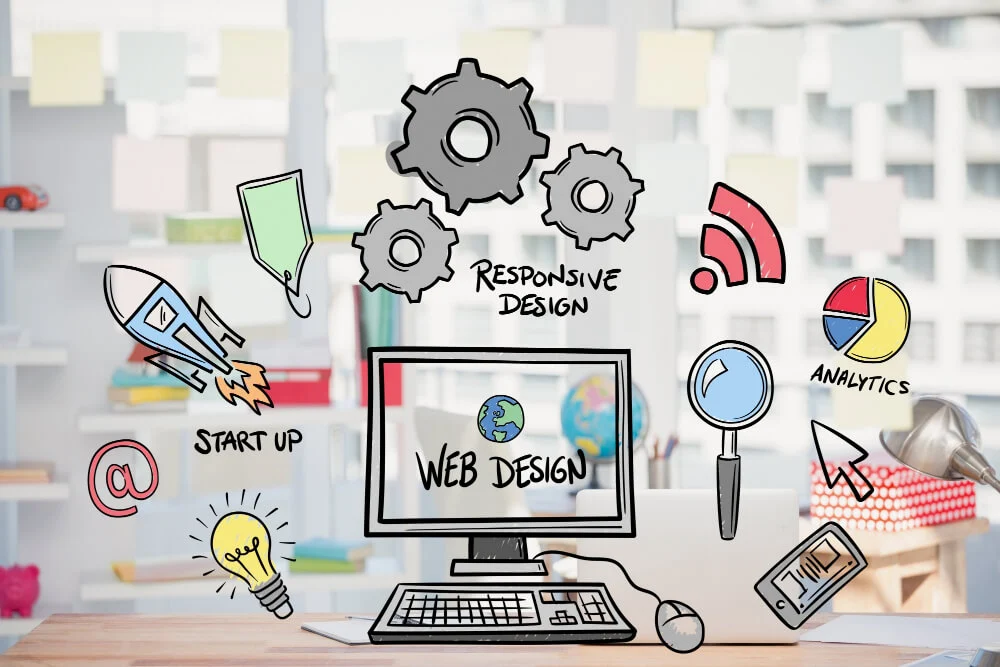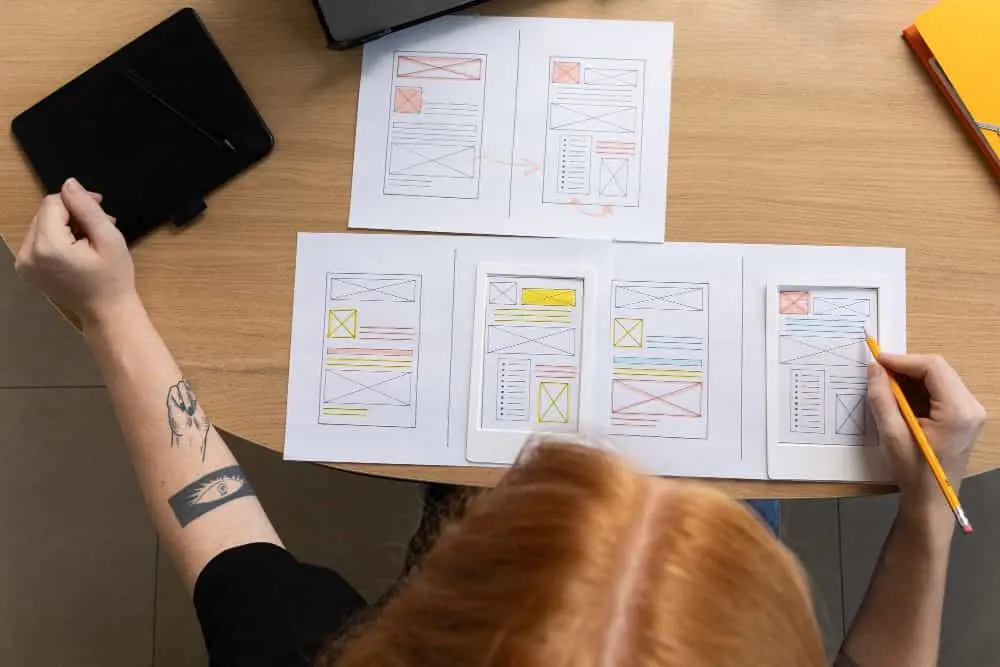In the rapidly evolving landscape of UX design, the need for exceptional skills has never been more pronounced.
To unlock success in 2023 and beyond, UX designers must embrace a diverse set of competencies that blend creativity, technical expertise, and collaboration. From mastering user research to harnessing the power of color psychology, this article explores the essential skills that will define the UX designers of the future.
Understanding the Role of a UX Designer
The Impact of UX Design on User Experiences
UX design is the invisible hand that shapes user experiences across digital products and services. It influences how users interact with websites, mobile apps, and software, ultimately determining their satisfaction and loyalty.
Key Responsibilities of a UX Designer
As advocates for users, UX designers wear multiple hats. From conducting user research to crafting intuitive interfaces, their role revolves around understanding and meeting user needs.

The Intersection of Creativity and Problem-Solving
At the heart of UX design lies the synergy between creativity and problem-solving. Designers blend artistic flair with analytical thinking to create experiences that captivate and fulfil user objectives.
Essential Technical Skills for UX Designers
Mastering User Research and Analysis
Delving deep into user behavior and preferences, UX designers conduct in-depth interviews, surveys, and usability tests. This data-driven approach yields invaluable insights that inform design decisions.
Conducting In-Depth User Interviews
Uncovering user motivations and pain points, designers conduct in-depth interviews that reveal valuable qualitative data. This empathetic approach is foundational for building user-centred experiences.
Analyzing User Behavior and Feedback
Through meticulous data analysis, designers gain clarity on user interactions, pain points, and patterns. This evidence-based approach empowers informed design decisions.
Utilizing Data-driven Insights for Decision-making
Incorporating quantitative data into the design process, designers employ user analytics to validate assumptions and fine-tune their solutions. Data-driven decision-making leads to more effective designs.
Information Architecture and Wireframing
Organizing Content for Intuitive Navigation
Information architecture involves structuring content in a manner that ensures seamless user navigation. Logical hierarchies and intuitive pathways enhance user satisfaction.
Creating Efficient and Structured Wireframes
Wireframes serve as blueprints for user interfaces, visualizing layout, and content placement. By creating clear and structured wireframes, designers set a solid foundation for the design process.
Balancing Functionality and Aesthetics
Designers harmonize form and function, ensuring that visual appeal does not compromise usability. Balancing aesthetics with functionality creates delightful user experiences.
Interaction Design and Prototyping
Designing Engaging Interactive Elements
Interaction design focuses on crafting engaging and intuitive interactions. Thoughtfully designed buttons, sliders, and animations elevate user engagement.
Translating Ideas into Interactive Prototypes
Prototyping transforms static designs into interactive experiences. Interactive prototypes allow designers to test and refine their solutions before development.
Iterative Prototyping for Continuous Improvement
Iterative prototyping involves refining and enhancing designs based on user feedback. This continuous improvement process leads to more robust and user-friendly interfaces.
Usability Testing and Feedback Integration
Conducting Usability Tests with Precision
Usability testing involves observing real users as they interact with prototypes. Precise testing methodologies uncover usability issues and guide design refinements.
Gathering Actionable Feedback from Users
User feedback provides invaluable insights for improving designs. Analyzing feedback helps designers prioritize enhancements and refine solutions.
Incorporating Feedback into Design Iterations
Feedback integration drives iterative design improvements. By incorporating user feedback, designers create solutions that resonate with users.
Creative Skills to Elevate UX Design
Visual Design and Branding

Crafting Visually Appealing User Interfaces
Visual design focuses on aesthetics, creating visually appealing user interfaces that delight users. Harmonizing colors, typography, and imagery enrich the overall experience.
Maintaining a Consistent Brand Identity
Incorporating brand elements ensures brand consistency across digital touchpoints. Aligning visuals with the brand personality fosters brand loyalty.
Utilizing Visual Elements to Evoke Emotion
Visual elements like illustrations and icons evoke emotions and create a sense of connection. These emotional resonances enhance the user’s emotional experience.
Typography and Microcopy
Choosing the Right Fonts for Readability
Typography impacts readability and user engagement. Choosing legible fonts enhances content comprehension and ease of use.
Crafting Impactful Microcopy for Delightful Interactions
Microcopy comprises concise and persuasive words that guide users. Thoughtfully crafted microcopy enhances user interactions and reinforces brand voice.
Balancing Text and Visual Elements Harmoniously
Harmonizing text and visuals ensures a cohesive and visually pleasing design. Achieving a balanced composition enhances the overall user experience.
Color Psychology in UX Design
Harnessing the Emotional Power of Colors
Colors evoke emotions and influence user perceptions. Utilizing color psychology strategically fosters positive emotions and associations.
Creating Meaningful Color Palettes
Color palettes communicate brand values and set the tone of the user experience. Meaningful color choices enhance the overall narrative.
Leveraging Color to Enhance User Experience
Using color to guide user attention and highlight key elements improves the user’s journey. Thoughtful color implementation improves user experience and usability.
Storytelling in UX Design
Weaving Narratives into User Journeys

Storytelling involves creating narrative-driven user journeys. By weaving stories into UX design, designers foster deeper user engagement.
Using Storytelling to Connect with Users Emotionally
Compelling stories evoke empathy and forge emotional connections with users. Emotional connections lead to heightened user satisfaction and loyalty.
Creating Memorable and Meaningful Experiences
Memorable experiences are etched in users’ minds. By designing experiences with narratives, designers create lasting impressions.
Collaborative Skills for Effective UX Design
Communication and Empathy
Collaborating Effectively with Cross-functional Teams
Effective collaboration with developers, marketers, and stakeholders is essential for successful projects. Seamless teamwork ensures design objectives align with business goals.
Communicating Design Intent Clearly to Stakeholders
Clear communication ensures stakeholders understand design decisions and their impact on user experience. Concise explanations build trust and consensus.
Empathizing with Users to Understand Needs
Empathy enables designers to connect with users on a deeper level. Understanding user needs fosters user-centric design solutions.
User-Centric Design Thinking
Applying Design Thinking Methodologies
Design thinking involves iterative problem-solving. Applying design thinking principles ensures that design solutions meet user needs and expectations.
Putting Users at the Center of the Design Process
Designers prioritize user needs, preferences, and pain points. A user-centred approach results in more meaningful and relevant experiences.
Fostering a Culture of User Empathy
Cultivating empathy within design teams enhances user-centricity. Empathy drives design decisions that resonate with users on an emotional level.
Project Management and Time Management
Setting Realistic Project Timelines and Milestones
Effective project management hinges on setting achievable timelines and milestones. Realistic planning ensures projects progress smoothly.
Balancing Multiple Projects and Deadlines
UX designers often handle multiple projects simultaneously. Effective time management ensures projects are delivered on time without compromising quality.
Staying Organized for Efficient Workflows
Organized workflows streamline design processes. Keeping assets and project files well-structured enhances productivity.
Presentation and Pitching Skills
Presenting Design Concepts with Confidence
Confidently presenting design concepts garners stakeholder buy-in. Strong presentation skills convey the value and potential impact of design solutions.
Pitching UX Design Solutions to Stakeholders
Pitching design solutions persuasively showcases the benefits and aligns stakeholders with design goals. Compelling pitches secure support for design initiatives.
Articulating Design Decisions with Clarity
Clear articulation of design decisions instills confidence in stakeholders. Justifying design choices based on user insights fosters consensus.
Staying Ahead in the Evolving UX Landscape
Keeping Abreast of Emerging Design Trends
Continuous learning is essential in the fast-paced design world. Exploring emerging UX trends empowers designers to embrace cutting-edge techniques and concepts.
Exploring UX Trends Shaping 2023 and Beyond
Exploring trends that will define the future of UX design is vital. Proactive adoption of trends prepares designers for upcoming design challenges.
Integrating Innovative Concepts into Design Work
Integrating innovative concepts into designs sets products apart from competitors. Daring to innovate drives design solutions that delight users.
Continuous Learning and Professional Development
Engaging in UX Design Workshops and Courses
Continual learning keeps designers informed of best practices and industry advancements. Workshops and courses enhance skill sets and foster growth.
Building a Diverse Skill Set for Adaptability
A diverse skill set enables designers to adapt to dynamic design demands. Versatility empowers designers to tackle diverse projects with confidence.
Pursuing Industry Certifications and Credentials
Industry certifications validate expertise and credibility. Pursuing certifications establishes designers as recognized authorities in the field.
Conclusion
Unleashing Your UX Design Potential in 2023
2023 holds boundless opportunities for UX designers to thrive. Embrace the evolving landscape, hone essential skills, and channel creativity into exceptional user experiences.
Embracing the Journey of Growth and Mastery
Embrace the journey of growth and mastery in UX design. Evolve alongside industry trends, collaborate with empathy, and continuously enhance your skills to reach new heights in your career.
With an arsenal of essential skills and a passion for enriching user experiences, you have the power to make a lasting impact on the world of design. As you unleash your potential, remember that every interaction you create shapes the digital landscape, empowering users, and unlocking a world of possibilities.
